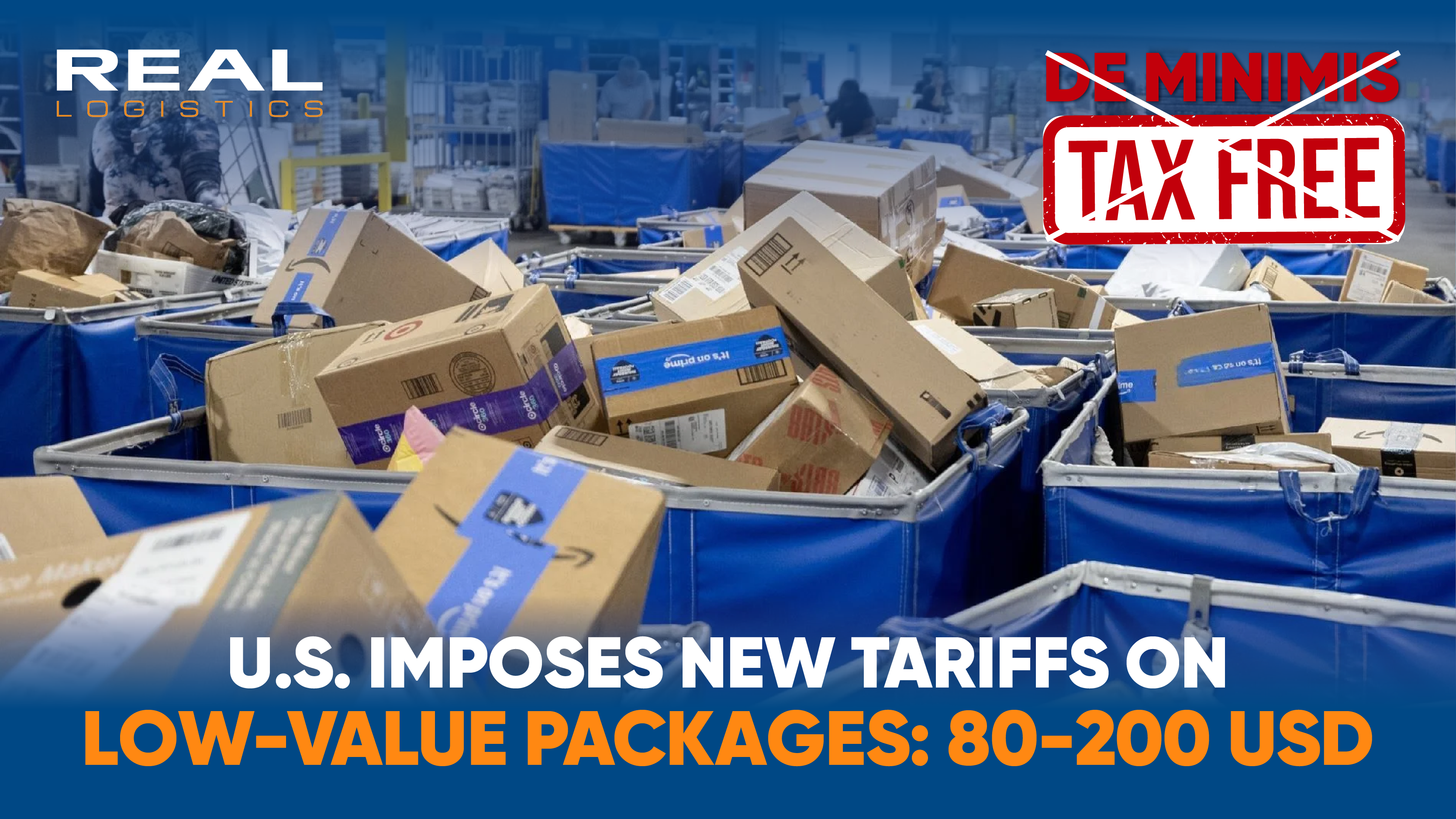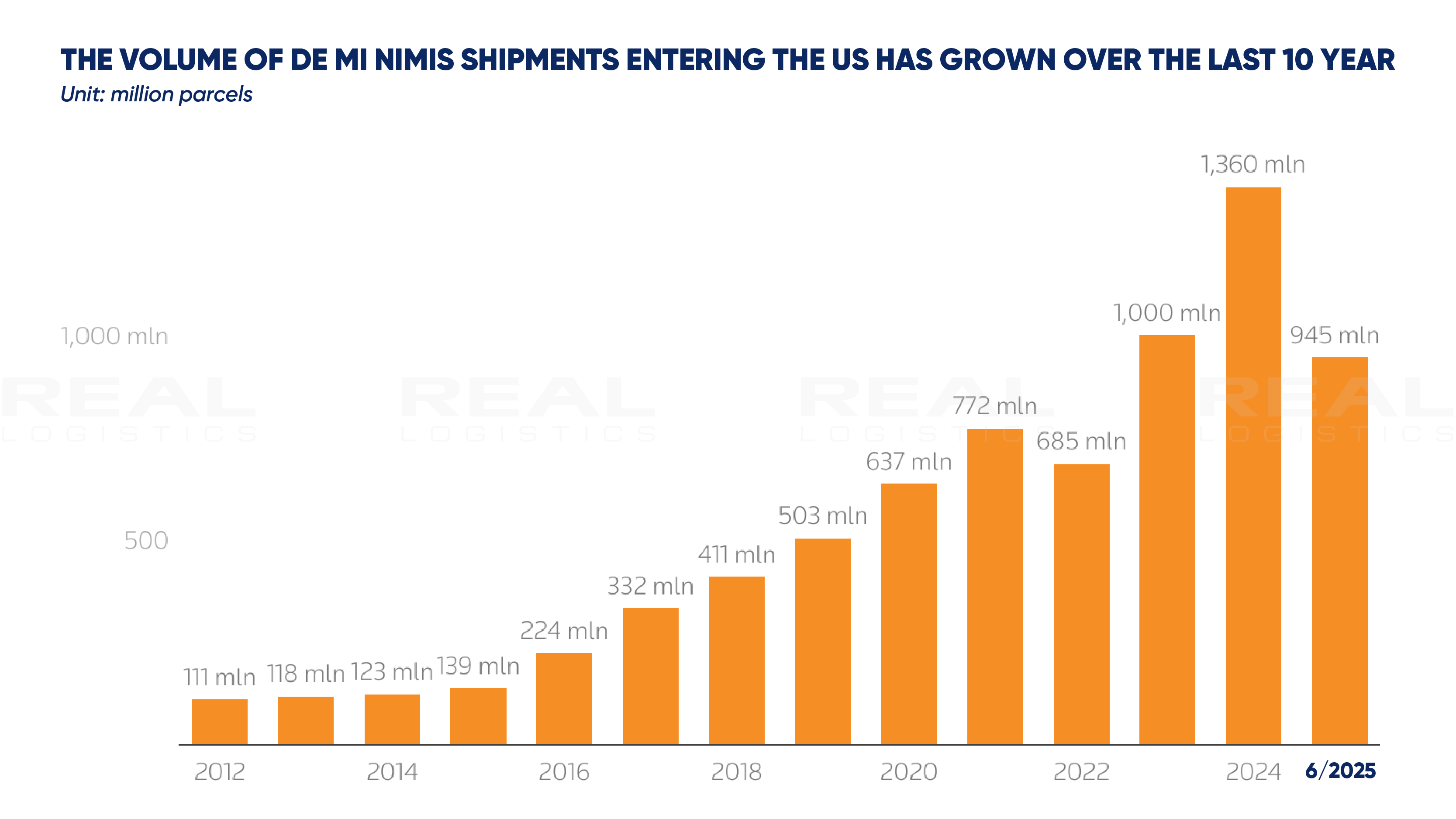U.S. Imposes New Tariffs on Low-value Packages: End of De Minimis, Rising Costs Ahead

On August 29, 2025, the United States officially ended the long-standing De Minimis trade rule, which had allowed small imports valued under 800 USD to enter the country without duties. This marks a major turning point in global trade, with far-reaching effects on cross-border e-commerce, international retailers, and small businesses.
1. What Is De Minimis and Why Was It Removed?
The De Minimis exemption was first introduced in 1938 at just 5 USD. In 2015, the threshold was raised to 800 USD to encourage e-commerce growth and support small businesses. However, the rapid rise of fast-fashion and online platforms like Shein and Temu pushed shipment volumes under De Minimis from 139 million in 2015 to 1.36 billion in 2024.

According to U.S. Customs and Border Protection (CBP), the loophole was widely abused, leading to:
- Billions in lost tariff revenue (estimated 10 billion USD annually)
- Inflows of counterfeit and substandard goods, and even fentanyl shipments
- Pressure on U.S. manufacturing and retail sectors
White House Trade Advisor Peter Navarro called it a “deadly loophole” that had to be closed immediately.
2. New Tariff Rules from August 29, 2025
From this date forward, all packages under 800 USD are subject to duties, regardless of value, origin, or shipping mode.
During a six-month transition period, CBP allows flat-rate duties per parcel:
- 80 USD/package: countries with tariff rates below 16% (UK, EU)
- 160 USD/package: countries with tariff rates between 16%–25% (Vietnam, Indonesia)
- 200 USD/package: countries with tariff rates above 25% (China, Brazil, India, Canada)
*Please refer to the Global Guidance for International Mail here.
After February 28, 2026, all shipments will be charged based on declared value (ad valorem). International express carriers like FedEx, UPS, and DHL will be responsible for collecting duties.
3. Global Impact and Business Consequences
The end of De Minimis forces global businesses to rethink their strategies:
- Chinese e-commerce: Platforms such as Shein and Temu lost significant advantages, saw declining revenues, and rushed to open warehouses in the U.S. to stay competitive.
- Global retail brands: Companies like Tapestry (Coach, Kate Spade) and Lululemon reported shrinking profits and stock declines as costs surged.
- Small businesses: Sellers on Etsy, eBay, and Shopify struggled with higher costs; many temporarily stopped shipping to the U.S.
- U.S. consumers: According to the National Bureau of Economic Research (NBER), consumers may pay an additional 10.9 billion USD annually, equal to 136 USD per household, with low-income families hit hardest.

4. What Vietnamese Exporters Need to Prepare
Vietnam falls into the 160 USD/package category during the transition period. This creates several challenges:
- Rising costs: Exporting low-value goods to the U.S. is far less competitive.
- Stricter compliance: Clearer customs declarations are required to avoid delays and disruptions.
- Strategic adjustments: Businesses should recalculate pricing, optimize logistics, or partner with U.S. distributors to reduce costs.
While this is a major challenge, it also presents opportunities for Vietnamese exporters to upgrade supply chain management and strengthen their position in the U.S. market through new operating models.
5. Conclusion
The end of the U.S. De Minimis exemption is more than a customs policy shift—it is a global shock that reshapes cross-border e-commerce and international trade. For Vietnamese businesses, success will depend on transparency, adaptability, and proactive planning to remain competitive in an increasingly challenging market.
—————————————
Real Logistics Co.,Ltd
👉 Facebook: Real Logistics Co.,Ltd
☎️ Hotline: 028.3636.3888 | 0936.386.352
📩 Email: info@reallogistics.vn | han@reallogistics.vn
🏡 Address: 39 - 41, B4 Street, An Khanh Ward, Ho Chi Minh
G2 Floor, No. 51, Quan Nhan Street, Thanh Xuan Ward, Hanoi

